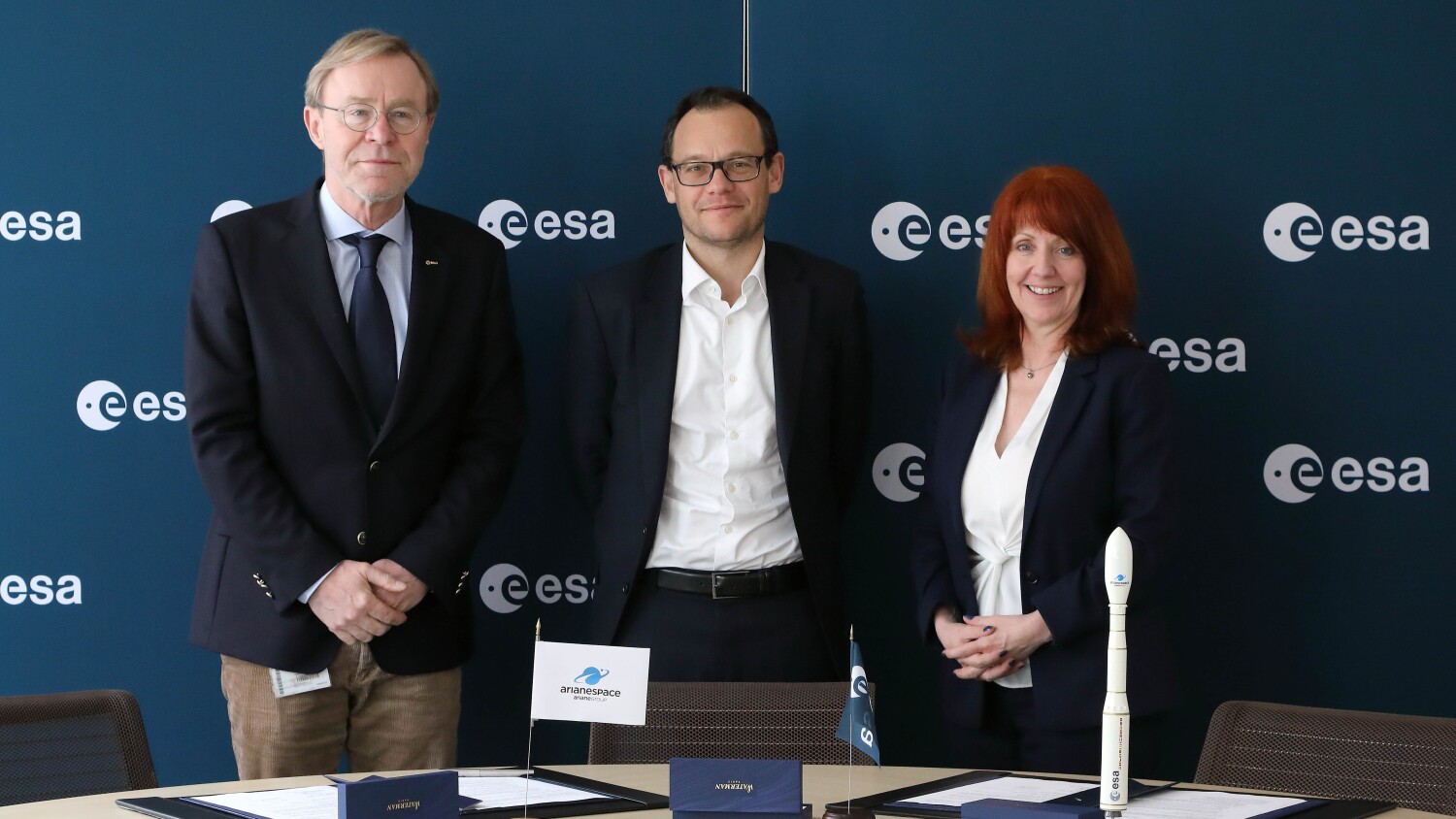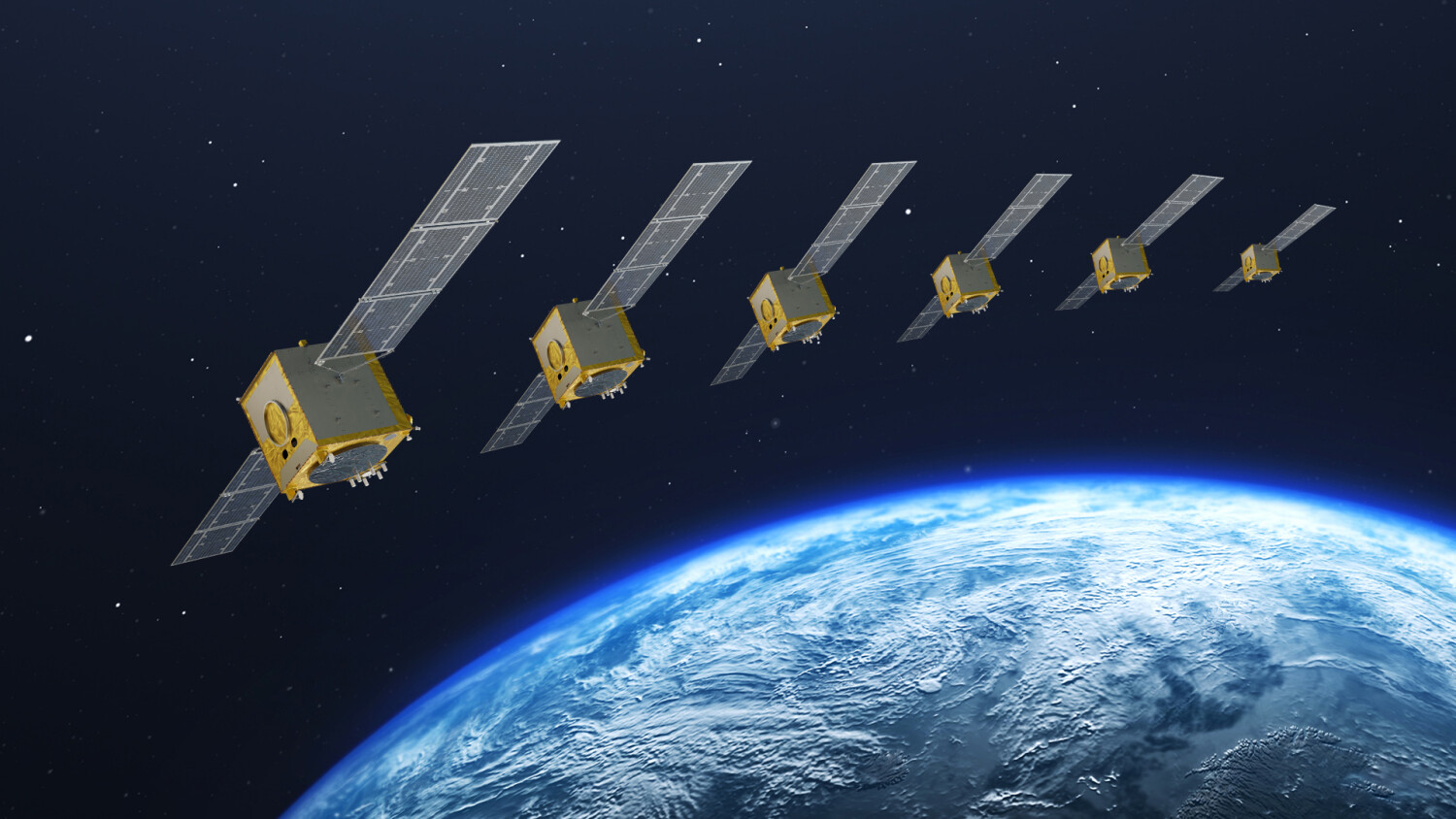On its ninth and last mission of the year, Arianespace orbited innovative satellites that address the need for autonomy and reliable access to space by Italy, the European Space Agency (ESA) and the French space agency CNES (Centre National d’Etudes Spatiales). It also served the ambitions of two young innovative companies: Tyvak and Hemeria.
COSMO-SkyMed Second Generation, the main payload on the mission, CHEOPS (Characterizing Exoplanet Satellite), and three auxiliary payloads, ANGELS, EyeSat and OPS-SAT, were successfully placed in orbit.
The launch took place on Wednesday, December 18, 2019 at 5:54 am (local time) from the Guiana Space Center (CSG) in Kourou, French Guiana (South America).
With this successful 23rd launch of the Soyuz medium-lift launcher from CSG, Arianespace has now launched a total of 159 satellites for European institutions, once again demonstrating the flexibility of its launcher family, comprising Ariane, Soyuz and Vega.
Following the launch, Arianespace Chief Executive Officer Stéphane Israël said: “We are very proud to meet the needs of Italy, ESA and CNES on our ninth and last launch of the year. The success of this multiple satellite launch for our customers clearly shows that Arianespace’s launch services are perfectly adapted to the requirements of Europe, its agencies and ESA member-states. We also are very pleased to count two young innovative companies – Hemeria and Tyvak – among our partners. Based on our ability to provide high-performance launch solutions for all kinds of satellites, with our family of Ariane, Soyuz and Vega launchers, Arianespace actively supports scientific research, space exploration and the development of tomorrow’s space technologies.”

Arianespace continues to support the Italian space program
Arianespace’s launch of the COSMO-SkyMed Second Generation satellite, developed by Thales Alenia Space (Italy) for the Italian space agency ASI and the Italian Ministry of Defense strengthens Italy’s role in the Earth observation market.
Featuring a synthetic aperture radar (SAR) capable of observations under any weather or lighting conditions, COSMO-SkyMed Second Generation will set a new performance standard for space-based radar observation systems in terms of precision and image quality.
Today’s launch is the ninth mission by Arianespace for Italy, and the fourth for the Italian space agency ASI.
COSMO-SkyMed Second Generation is the 162nd satellite built by Thales Alenia Space to be launched by Arianespace. Five others satellites are in Arianespace’s order book.
Arianespace supports ESA’s Cosmic Vision program
The CHEOPS (Characterizing Exoplanet Satellite), satellite was developed within the scope of ESA’s scientific program, in partnership with Switzerland and several other member-states.
This is the first mission dedicated to studying exoplanets already identified (planets outside the Solar System). It will enable to better understand the formation process of these planets, ranging from “super-Earths” – planets with several times the mass of the Earth – to planets in the Neptune class. The data gathered by this satellite will give an idea of how the planets change orbit during their formation, and the evolution of their stellar system.
Airbus in Spain is prime contractor for the mission, with the University of Bern being responsible for the telescope Airbus coordinated a consortium of 24 companies (including seven from Spain) from 11 European countries to build CHEOPS. It is the 128th Airbus satellite to be launched by Arianespace, which has 21 more satellites from this partner in its launch backlog.
ESA has also chosen Arianespace for several upcoming landmark scientific missions, including the James Webb Space Telescope (on behalf of NASA) in mid-2021 and JUICE (JUpiter ICy moons Explorer) in mid-2022.
CHEOPS represents the 74th ESA satellite and 52nd mission launched by Arianespace for the European agency.
OPS-SAT, EyeSat and ANGELS: Arianespace helps ESA and CNES develop innovative space solutions
The OPS-SAT cubesat, an auxiliary passenger, is the first satellite to be launched by Arianespace for the operator Tyvak, on behalf of ESA.
Tyvak offers access to space by providing end-to-end, cost-effective space systems using agile aerospace processes and accelerating on-orbit access for the small-, nano- and CubeSat categories of satellites. Tyvak International of Italy provided the deployer and launch service for OPS-SAT. Developed by the Graz University of Technology (Austria), OPS-SAT is the world’s first free-for-use in-orbit testbed for new satellite control software, applications and techniques.
EyeSat is the 16th satellite launched by Arianespace for French space agency CNES. Fitted with a small telescope, EyeSat, a 3U CubeSat, will study the zodiacal light and take images of the Milky Way. It is part of the Janus project, designed to encourage university and engineering school students to develop their own smallsats.
ANGELS (for: Argos Néo on a Generic Economical and Light Satellite) is a 12U CubeSat, and is the first nanosatellite wholly produced by French industry. It is jointly financed and developed by the French CNES space agency (Centre National d’Etudes Spatiales) and Hemeria – which is an affiliate of Nexeya, an innovative industrial group active in the aerospace, defense, energy, rail and automotive markets.
The satellite will be fitted with a miniaturized ARGOS Néo instrument, which is 10-times smaller than the equivalent previous-generation device. The instrument collects and determines the position of low-power signals and messages sent by the 20,000 ARGOS beacons now in service worldwide.
ANGELS is the 17th satellite launched by Arianespace for CNES and the first for Hemeria.
OPS-SAT, EyeSat and ANGELS are the 12th, 13th and 14th cubesats launched to date by Arianespace. With the new launchers Ariane 6 and Vega C set to enter service in 2020, plus new multiple launch systems – SSMS for Vega and MLS for Ariane 6 – Arianespace will expand its small satellite launch service offering.
Nine Arianespace launches in 2019
Today’s launch, VS23, is the ninth and final launch of 2019 for Arianespace: four with Ariane 5, three with Soyuz and two with Vega. Arianespace’s launcher family, comprising Ariane, Soyuz and Vega, orbited 24 satellites during the year, spanning a wide variety of space’s applications.







